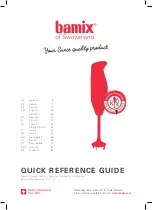
46
On channels with dedicated
sources like the board operator mic,
phone, and media server playback
channels, there may only be one or
two sources shown when the
encoder is rotated. On channels
with sources that are used
periodically (like a CD player or an
auxiliary studio input) there might
be a dozen or more alternate
sources available, even though one
source may be “dialed up” on that
channel most of the time.
Typically, the last few faders near
the monitor controls include every
system source so that they could go
to air, be recorded, be fed to a
network, or be fed to the Internet
stream.
Bus Assign Buttons
Each fader channel can be
assigned to any combination of the
program buses using the PGM 1,
PGM 2, PGM 3, and PGM 4
Assign buttons. A lit button
indicates that channel is assigned
to that bus. An unlit button
indicates the channel is not
assigned to that bus.
PGM 1 – PGM 3 operate the
same: all three buses are fed post-
fader and post-Channel On switch.
In other words, to hear the
channel’s audio on these program
buses the channel must first be
assigned to that bus (PGM 1, PGM
2, and/or PGM 3 buttons lit); the
channel must be turned on; and the
channel fader must be “potted
up,” typically set so its fader knob
aligns with the two Unity Gain
Marks.
PGM 4 differs from the other
program buses because it can be set for pre-Channel On switch operation
(the audio is always connected to that bus) and/or pre-fader operation
(the fader does not affect the source’s level to that bus). These settings
allow the PGM 4 bus to function like a Send bus which might be used to
feed an FX unit.
The PGM 4 bus buttons can also be used to control the Off Line or OL
bus, which is used when phone callers and/or remotes are connected to
the console. The PGM 4 bus assign buttons are then used to control which
channels’ audio is returned to the caller or remote while their channel is
off. Using the special features of the PGM 4 / OL bus is covered in more
detail in the next section (Caller/Remote Operation).
If no callers, remotes, or FX units are connected to the console, the PGM
4 bus would be set to function the same as the other three PGM buses: the
channels feed it post-fader and post-Channel On switch.
For an on-air studio, PGM 1 is typically used to create the on-air signal.
This means that all channels assigned to PGM 1, turned on, and potted up
will feed air. PGM 2 is often used to create a network or Internet stream
feed which requires alternate program elements from what’s going out
over the air.
The PGM 2 and PGM 3 buses may also be used to simultaneously feed
selected channels to recorders, whether to time-shift-record programming
or to do voice-tracking while the console simultaneously feeds completely
different source material to air.
In a production room, PGM 1 is typically connected to the main
production recorder running Adobe Audition or other on-screen editor. If
the console is in a newsroom or a talk studio, the PGM 1 output might be
included as a source on a fader channel on the air console to allow the
host to mix the talk studio mics, or the news announcer to go live from the
newsroom while controlling their own mix of NewsBoss playback actualities
and other sounders along with their mic audio.
Caller/Remote Operation
When phone callers and live remotes are used with the DMX, the PGM 4
buttons are used as Off Line bus (OL bus) assignment buttons. The OL bus
is used to create a special “return signal” for each caller and remote while
the caller and remote fader channels are turned off to allow for hands-free
conversation between the board operator and the caller/remote.
Typically, the caller/remote channel is assigned to cue so the board
operator can hear them. The board operator’s mic channel is assigned to
PGM 4 (e.g., assigned to the OL bus). Typically no other channel is
assigned to PGM 4 so that the caller/remote only hears the board op’s mic.
If there’s a host or producer, their mic may also be assigned to PGM 4 so
the caller or remote can hear them as well.
When the caller/remote is to go live to air, when their channel is turned
on their return audio automatically switches from the OL bus to the PGM 1
bus so they hear everything (minus their own audio) that’s going to air,
allowing them to interact with guests in the studio or other show elements.
Figure 4-2 Fader Channel Controls
Содержание DMX-16
Страница 1: ...1 Networked AoIP Broadcast Console Manufactured by Wheatstone Corporation ...
Страница 4: ...4 ...
















































